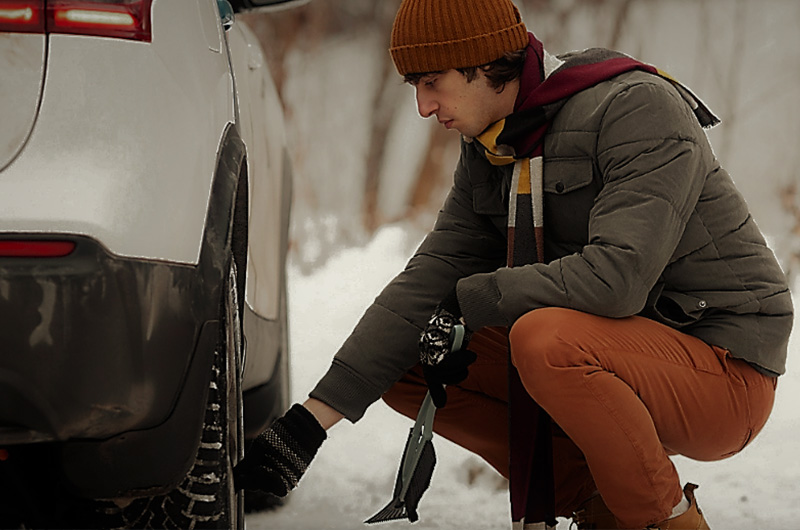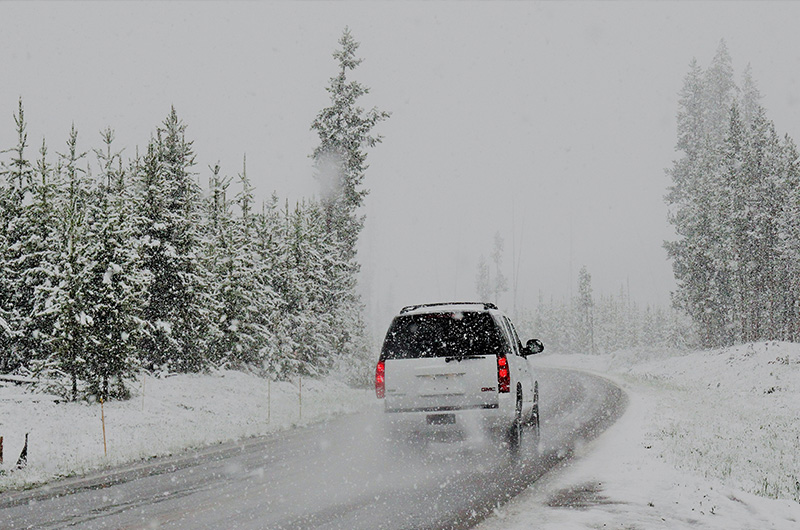This is no secret that in to drive safely in the winter, you need winter tires that are customized to your specific requirements. Do not delay in installing them as soon as the mercury begins to consistently hover around 7 degrees Celsius for many days in a row. Both the rubber compound that is used in winter tires and the deeper grooves that are seen in their tread are designed to perform better in temperatures that are lower. It will be significantly less difficult to drive on snow and ice.
You can assure that your vehicle is up to the task only if you get it completely maintained and equipped for the driving conditions that occur throughout the winter. Your driving safety will improve, and your vehicle will last longer, if you do routine maintenance on it during the winter.

Initial level of inspection
The first step in getting your vehicle ready for the colder months is to inspect all of its individual parts in great detail. Check the belts and hoses to see if they have any bulges, cracks, or leaks that might be made worse by the variations in temperature. Have the headlights on your car been able to withstand the effects of time? A lot of garages provide polishing as an additional service.
Because of the increased demand placed on electrical circuits during the winter months, it is essential that you check both the battery and the alternator of your vehicle to verify that they are in excellent working order.
Essentials
The winter season often presents a severe combination of weather conditions, and the best way to deal with them is to equip oneself with equipment that are specifically built to withstand harsh environments. Initially, you need shell out some cash for a reliable snow brush and scraper that will effortlessly remove the ice sheets from your windshield.

Vehicle liquids that need to replaced
It is imperative that you change up the key fluids in your vehicle before winter sets in. You will be able to drive without risk even in the most hazardous winter circumstances if you do it this way.
Engine oil
Oil for the engine is an integral component of any vehicle. It fulfills a variety of functions inside of your car. Lubrication, cooling, cleaning, protecting against corrosion, and sealing are some of the other functions that it performs. In this manner, it safeguards the engine components from wear and degeneration.
It is crucial to take into consideration the oil’s weight while selecting the most suitable oil for the winter. It is communicated by the use of two numerals, such as 5W-20 or 10W-40.
The first number indicates the winter viscosity rating, which is the lubricant’s viscosity when it is at 0 degrees Celsius. Because of this, it is followed by the letter W.
The second value is the oil’s viscosity at very high temperatures, and it is normally tested at a temperature of one hundred degrees Celsius.
Because of this, a low value for the first number indicates that the motor oil will continue to flow freely even when exposed to temperatures below zero. On the other hand, you want the second number to be as high as possible since this ensures that the lubricant will keep its ideal thickness even when heated.
Car coolant
Your vehicle’s engine is safe from damage caused by overheating and freezing thanks to the coolant in your vehicle. It keeps the water in your engine’s cooling system from becoming frozen during the colder months of the year. The engine in your vehicle might suffer significant damage or possibly be rendered completely inoperable if it freezes.

The compounds that are included in engine coolant include potent anti-oxidants and rust preventatives. It enhances heat transmission and decreases the accumulation of scale on the various components of the cooling system.
Washing fluid
In temperatures below zero, washer fluid used in the summer might freeze, causing damage to the wiper blades.

Keep in mind that the power of the battery will decrease as the temperature decreases. On chilly winter days it is needed a greater amount of electricity to start your automobile. If your battery is old and worn out, it is possible that it may die just when you need it the most. Because of this, you should give some thought to changing your battery at the appropriate interval.
Summer tires are more susceptible to damage when temperatures hit the freezing mark. Cracks in the tread may cause long-term damage in addition to being an exceedingly hazardous condition. This indicates that after winter is done, you will need to replace your current tires with new summer tires.
Winter season driving tips

Prepare your winter driving equipment. Tire chains, a bag of salt, a tow rope, an ice scraper, a snow shovel, a blanket, booster cables, and warning devices should all be included in it. Get your munchies ready in case of an emergency. When driving on snow or ice, you should keep your speed moderate to maximize traction. Regaining traction and preventing sliding requires a progressive use of the accelerator pedal. Maintain a minimum of fifty percent of a full tank of gasoline in your car at all times.
Fin great winter car accessories on Amazon.com







